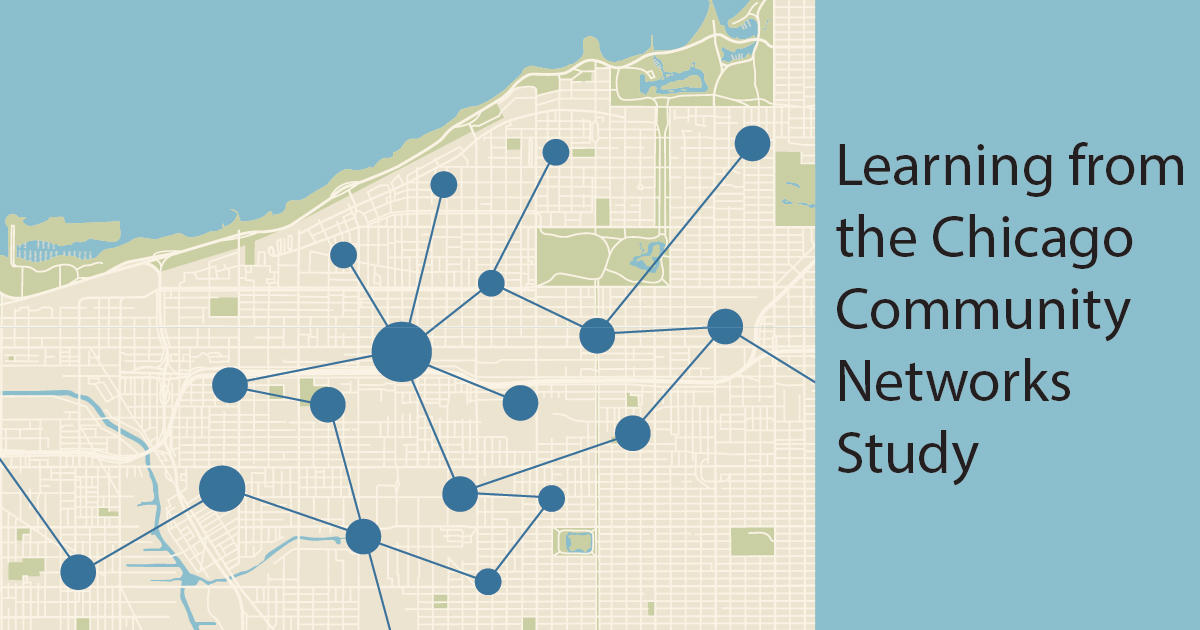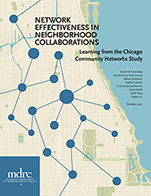Network Effectiveness in Neighborhood Collaborations
Learning from the Chicago Community Networks Study

 Federal, state, and local policies focused on neighborhood improvement have long emphasized the need for community organizations to share information, coordinate activities, and collaborate in the delivery of services. These partnerships build “community capacity,” as a way of promoting local problem solving and community well-being over the longer term. But there has been almost no formal measurement of how community organizations work together, whether differences in patterns of collaboration and leadership exist across neighborhoods, and how these patterns are influenced by the nature of the problems being addressed. There has also been only limited research on which patterns of neighborhood networks are most conducive to implementing effective collective work. This report uses social network analysis, drawing from a network survey, and extensive field research to ask how specific patterns of partnership promote better-implemented collaborations that in turn can successfully inform public policy.
Federal, state, and local policies focused on neighborhood improvement have long emphasized the need for community organizations to share information, coordinate activities, and collaborate in the delivery of services. These partnerships build “community capacity,” as a way of promoting local problem solving and community well-being over the longer term. But there has been almost no formal measurement of how community organizations work together, whether differences in patterns of collaboration and leadership exist across neighborhoods, and how these patterns are influenced by the nature of the problems being addressed. There has also been only limited research on which patterns of neighborhood networks are most conducive to implementing effective collective work. This report uses social network analysis, drawing from a network survey, and extensive field research to ask how specific patterns of partnership promote better-implemented collaborations that in turn can successfully inform public policy.
Key Findings
-
Networks where well-connected organizations are tightly connected to each other appear better situated to implement successful educational improvement and community housing initiatives. Education and housing networks with a set of well-connected core partners — each bringing their own resources and relationships to the table — appeared better able to develop community-school partnerships, commercial corridor development projects, business improvement districts, and corridor beautification activities.
-
Public policy networks with well-positioned brokers can foster broad-based mobilization to inform public and elected officials. These organizations, which tended to be community organizing groups, were often the single conduit to connect elected officials and smaller community organizations. Far from acting as “gatekeepers” who excluded others in the community from participating, these organizations worked to include partners in efforts to change public policy.
-
Networks that combine public policy and neighborhood organizing with service delivery appear to create some important advantages. This combination of policy and service delivery may enhance both the quality of services and their ability to attract resources and partners.
The above findings have a qualitative, observable component, making it possible for funders to identify neighborhoods with advantageous structural supports before choosing to invest in that location, and for practitioners to support certain patterns of community activity.
A second report, drawing on a second wave of the study’s survey, will explore how networks changed from 2013 to 2016, and will be released in 2018.







